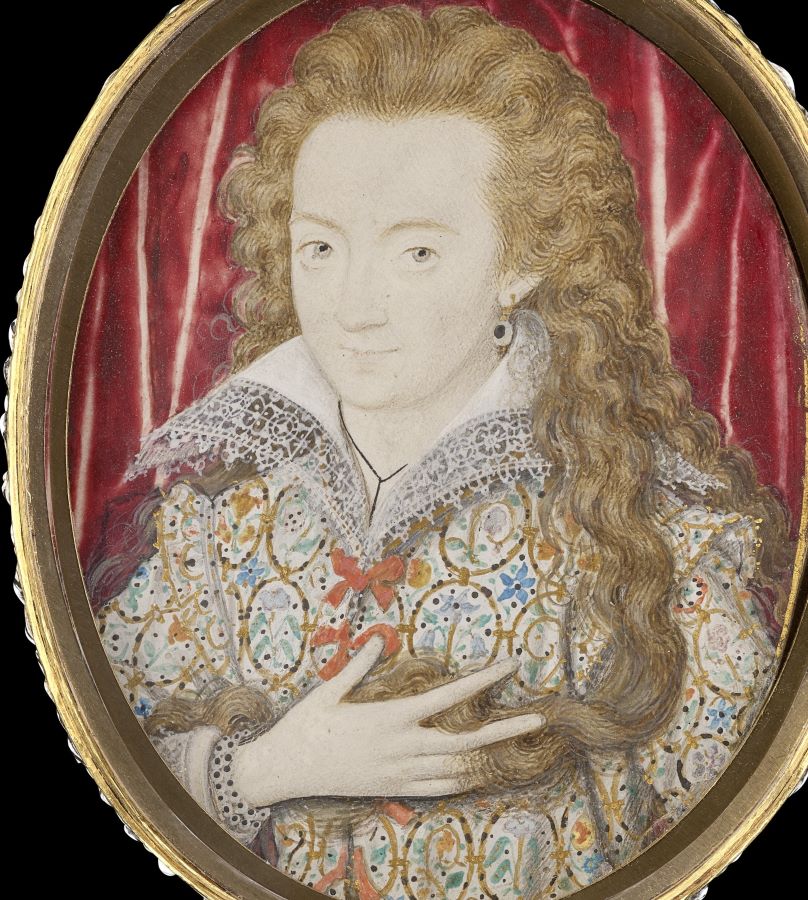04 Sep 2025
The Bard, the Card and Hilliard; an Important New Discovery

For the last 8 months, Emma Rutherford, Elizabeth Goldring and Professor Sir Jonathan Bate have been researching one of the most important art discoveries of recent years – a portrait miniature by Nicholas Hilliard (c.1547-1619) of Henry Wriothesley (1573-1624), 3rd Earl of Southampton, datable to the early 1590s. It is published in the Times Literary Supplement, The Guardian, The Telegraph, Antiques Trade Gazette, Daily Mail, Huffington Post, Pink News and GB News. Emma and Elizabeth also discuss the discovery on podcasts Not Just the Tudors and The Tudor Chest.
When the miniature was first opened by conservator Alan Derbyshire, there was a surprise on the reverse. Portrait miniatures of the 16th and 17th century were painted on vellum stuck down on playing cards – in this case a heart suit. Here the heart had been vandalised – obliterated by an arrow, spade or spear.
While all evidence and provenance points to Southampton as the sitter in this miniature, the defaced heart posed something of a mystery. However, after 430 years we may be able to unravel this.
Although it must remain a theory, the most likely scenario is that the reverse of this miniature was defaced by the spurned lover of the sitter. To get to the back of the miniature, it would have been taken out of the gold locket in which it would have been presented. The action of inking over the heart seems to say ‘you have pierced my heart’. So what with? It is known that Southampton had several male lovers, one of whom may have returned this miniature, spurned by the marriage of their paramour to Elizabeth Vernon in 1598.
One person who would have been a possible recipient for this miniature would have been William Shakespeare and it is of course tempting to see the inked arrow on the reverse as in a fact a spear and a pun on his name. Why Shakespeare? In terms of his relationship with Southampton we have the dedications from his two poems – Venus and Adonis in 1593 and The Rape of Lucrece in 1594 (written around the time the miniature was painted). These two dedications shift from a conventional plea for patronage in 1593, evolving into something approaching intimacy in 1594. The latter dedication includes the lines “The love I dedicate to your Lordship is without end … What I have done is yours; what I have to do is yours; being part in all I have, devoted yours”.
Southampton is also the most likely candidate for the ‘Fair Youth’ of Shakespeare’s sonnets – in which the young man to whom the outpouring of desire by the writer is praised for his androgynous beauty.

It is even possible that these sonnets were written with the knowledge of this miniature – as the reader is invited to return the gaze of the fashionably dressed and bright-eyed “Master Mistress”, who has been transformed into a painting limned by the hand of Nature herself. Executed perhaps in miniature on the “gentle heart” of a playing card?
FOR PRESS ENQUIRIES
Please contact Tracy Jones, Brera PR - tracy@brera-london.com / +44(0)1702 216658 / +44(0)7887 514984 / brera-london.com







